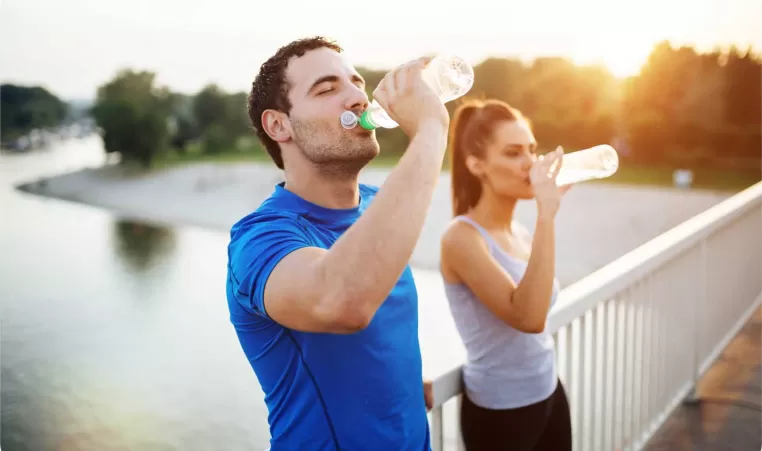The Importance of Hydration

By: Susan Hickey
As the summer progresses, many of us will be participating in outdoor activities where we will be facing significant heat. We might be running a 5K, going for a family bike ride, or sitting on the bleachers watching our children play baseball at the YMCA. In any of those situations, we are at risk of heat-related illness.
One of the best defenses against heat exhaustion is adequate hydration. According to the Centers for Disease Control, every summer 318 people die because of heat-related illnesses. The truly sad thing is that most of these deaths were preventable. Ensuring appropriate hydration can help prevent this unfortunate event.
People must educate themselves about the signs of dehydration so they are able to recognize the condition in themselves and others. Mild initial signs of dehydration include:
-
Dry lips and tongue
-
Urine that is a concentrated color, usually intense yellow or a brownish-yellow
-
Weakness and fatigue
-
Headache
-
Nausea
If these symptoms are present in a healthy adult, generally just focusing on increased fluid intake, as well as rest, can combat this situation. Plain water is the best option. Drinks that contain caffeine and/or alcohol must be avoided, because they would exacerbate the situation. If these symptoms are noted in a child or an elderly person, medical attention should be sought.
If, however, the condition is not managed at an early stage, the following symptoms may develop:
-
Lack of urination
-
Rapid heartbeat/breathing
-
Sunken eyes
-
Disorientation/mental status changes
These symptoms, in any individual, are cause for immediate activation of the emergency response system and medical assistance must be requested.
How can dehydration be prevented? The easiest way to avoid it is to be proactive about fluid intake. Adults need 17-20 ounces of fluid an hour or two *before* beginning outdoor activity, and they need to supplement that with an additional 7-10 ounces every 10-20 minutes. Once activity has stopped, they need to continue drinking at least 24 ounces more fluid over the next two hours. One adult-sized gulp of fluid is approximately equivalent to one ounce of fluid. Water is the best option, but sports drinks can also supplement electrolytes that may be lost during sweating. However, sports drinks can be high in sugar, so one would want to compare nutrition labels.
An easy way to check your hydration level is to check the color of your urine. Urine should be pale yellow to clear in color when one is properly hydrated. If you want to know exactly how much you need to rehydrate during intense outdoor exercise, experts recommend you weigh yourself prior and after exercise. Every pound of sweat lost equals a pint of fluids needed to rehydrate.
Be safe this summer when outdoors, and plan to stay hydrated by following these tips!
Sources:
https://www.verywellhealth.com/staying-cool-and-hydrated-on-hot-summer-days-3522345
Susan Hickey is a part-time physical therapist and SAHM of 3. Susan and her family are Coffman YMCA members.
